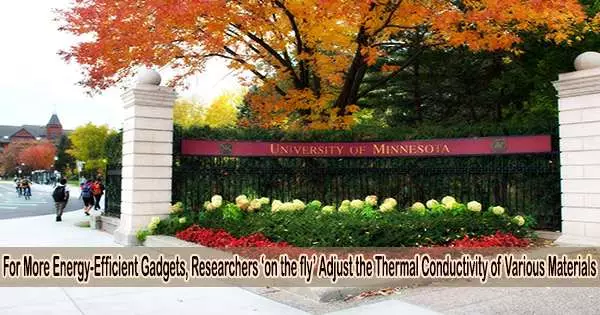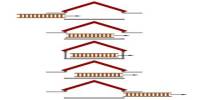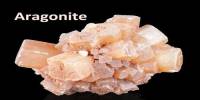Energy-efficient devices are electronic devices designed to minimize energy consumption and reduce their environmental impact. These devices are built with technologies and features that optimize energy usage without compromising performance or functionality.
Scientists and engineers from the University of Minnesota Twin Cities led a team that developed a fresh technique for adjusting a material’s thermal conductivity to regulate heat flow “on the fly.” Their tuning range is the largest one-step process tuning range ever seen in the field, and it will pave the way for the creation of more robust and energy-efficient electronic systems.
The researchers’ paper is published in Nature Communications.
The same way that a material’s electrical conductivity indicates how well it can transport electricity, a material’s thermal conductivity defines how well it can carry heat. For instance, many of the metals used to create frying pans have a high thermal conductivity, which allows them to efficiently transfer heat to cook food.
Typically, the thermal conductivity of a material is a constant, unchanging value. But a team from the University of Minnesota has found a quick method to “tune” this number in the substance lanthanum strontium cobaltite, which is frequently used in fuel cells. The researchers’ approach offers a means to turn heat flow on and off in gadgets, much like how a switch controls the flow of electricity to a light bulb.
Although it was challenging to measure the thermal conductivity of lanthanum strontium cobaltite films because they are so ultrathin, it was quite exciting when we finally got the experiments to work. This project not only provides a promising example of tuning materials’ thermal conductivity but also demonstrates the powerful approaches we use in our lab to push the experimental limit for challenging measurements.
Yingying Zhang
“Controlling how well a material can transfer heat is of great importance in daily life and in industry,” said Xiaojia Wang, co-corresponding author of the study and an associate professor in the University of Minnesota Department of Mechanical Engineering.
“With this research, we have achieved a record-high tuning of thermal conductivity, showing promise for effective thermal management and energy consumption in the electronic devices people use every day. A well-designed and functioning thermal management system would enable better user experience and make devices more durable.”
Wang’s team worked in tandem with University of Minnesota Distinguished McKnight University Professor Chris Leighton, whose lab specializes in materials synthesis.
The lanthanum strontium cobaltite devices were made by Leighton’s team using a technique called electrolyte gating, in which ions (molecules with an electrical charge) are pushed to the material’s surface. This allowed Wang and her research team to manipulate the material by applying a low voltage to it.
“Electrolyte gating is a tremendously powerful technique for controlling the properties of materials, and is well established for voltage-control of electronic, magnetic, and optical behavior,” said Leighton, co-corresponding author of the study and a faculty member in the University of Minnesota Department of Chemical Engineering and Materials Science.
“This new work applies this approach in the realm of thermal properties, where voltage-control of physical behavior is less explored. Our results establish low-power, continuously tunable thermal conductivity over an impressive range, opening up some pretty exciting potential device applications.”
Using energy-efficient devices not only helps reduce energy consumption and save money but also contributes to environmental sustainability by lowering greenhouse gas emissions and conserving natural resources.
“Although it was challenging to measure the thermal conductivity of lanthanum strontium cobaltite films because they are so ultrathin, it was quite exciting when we finally got the experiments to work,” said Yingying Zhang, first author of the paper and a University of Minnesota mechanical engineering Ph.D. alumnus.
“This project not only provides a promising example of tuning materials’ thermal conductivity but also demonstrates the powerful approaches we use in our lab to push the experimental limit for challenging measurements.”
















